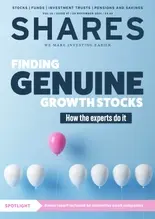
- Return to full year profit
- Dividends could return in 2023
- Healthy pipeline of new contracts
Travel food and beverage operator SSP (SSPG) pleased investors with a decent set of results for the 12 months to 30 September 2022.
The company swung back into profit and saw a big increase in revenue as travel returned to some kind of normality in the wake of the pandemic. It was rewarded with a 4.3% share price gain to 225.6p.
SSP owns the Upper Crust and Ritazza franchises and also operates sites in trains and airports across the globe for third parties like Burger King and Starbucks (SBUX:NASDAQ).
While serving a literal captive audience had enabled the business to generate strong returns for several years and saw its shares reach a high of more than 600p having joined the market in 2014 at 210p per share, its business was heavily impacted by Covid restrictions.
Full year pre-tax profit was £25.2 million, compared with a loss of £411.2 million in the previous financial year. Revenue was up from £834.2 million to £2.19 billion.
WHY THE DIVIDEND COULD BE COMING BACK
Driven by a recovery in passenger numbers revenue was at 90% of pre-pandemic levels in the second half of the 12-month period compared with 64% in the first half. It has subsequently hit 104% in the first weeks of the current financial year.
There is a plan to resume dividend payments next year with net debt returning to 2.1 times earnings as at 30 September.
SSP is guiding for revenue for the year as a whole of between £2.9 billion and £3 billion, rising to between £3.2 billion and £3.4 billion in the September 2024 year.
Supporting this, since 2019 the company has secured net new contract units with annualised revenue of £500 million.
Shore Capital analyst Greg Johnson commented: ‘SSP is an exceptionally high-quality company in our view, laid low through no fault of its own by the pandemic, now hopefully in the rear-view mirror.
‘We see the results as highly supportive of the recovery profile, with the building pipeline evidence of the long-term growth potential, which in our view fails to be reflected in the current valuation.’




